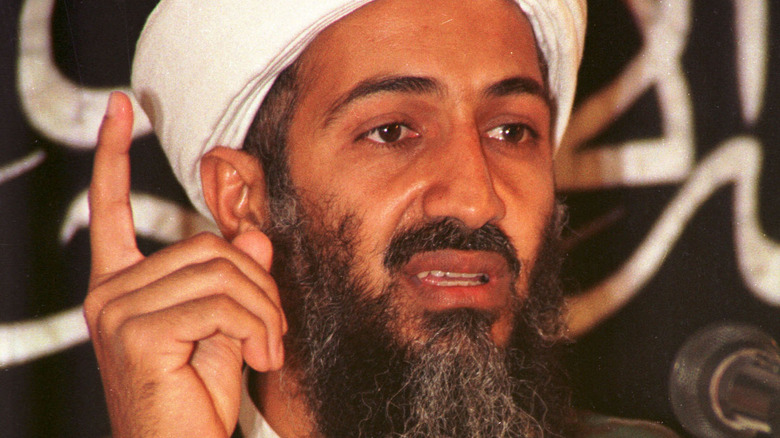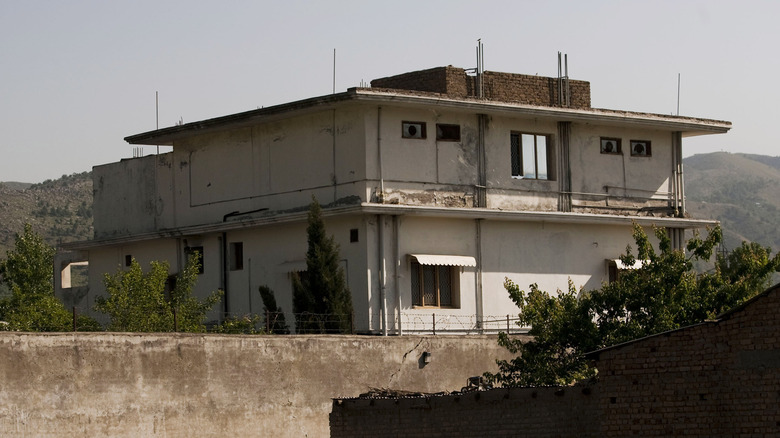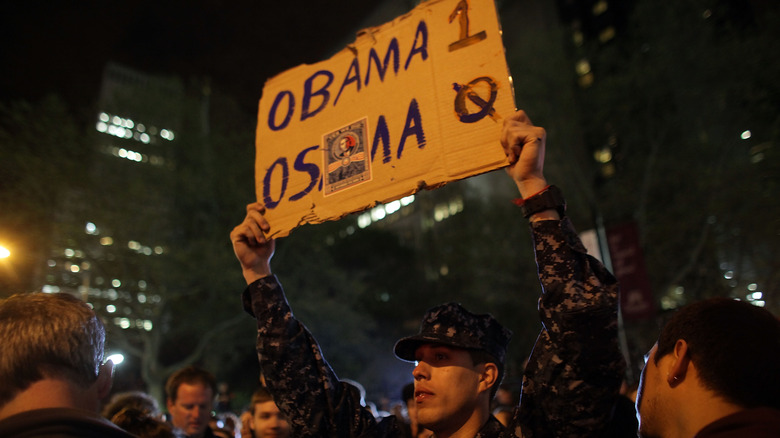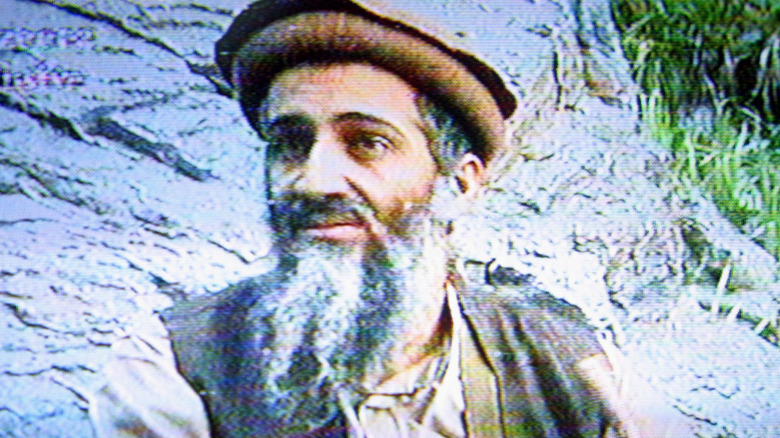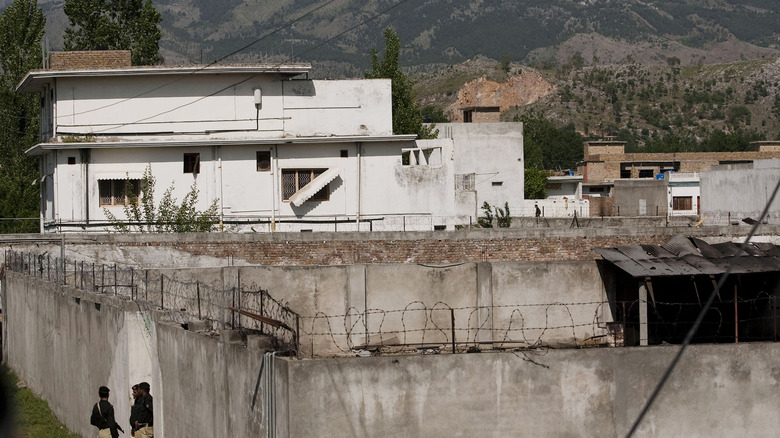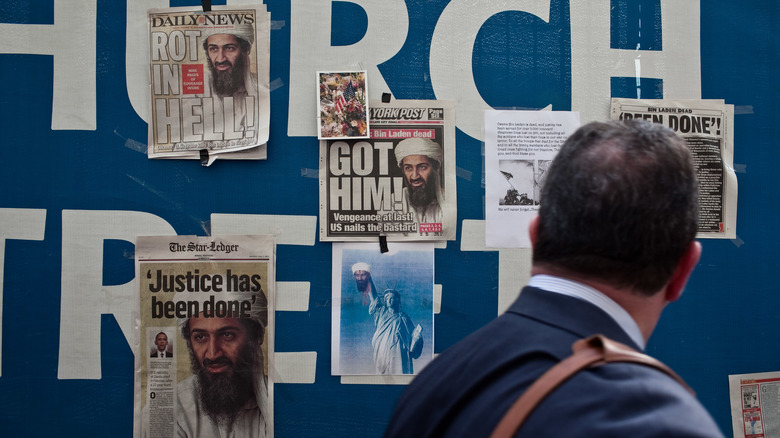The Disturbing Details Of Osama Bin Laden's Death Scene
On May 2, 2011, it was announced that Osama bin Laden had been shot and killed by a SEAL team at his hideout in Abbottabad, Pakistan. The Al Qaeda leader had been on the run from the U.S. intelligence services for almost a decade after masterminding the terror attacks of September 11, 2001, which took the lives of 2,977 people along with those of the 19 hijackers, and the audacious raid was the culmination of countless hours of work as the U.S. waged its "War on Terror" in the Middle East.
The announcement was met with disbelief by many Americans, who after years of reports of near misses and strikes on other Al Qaeda targets had all but lost hope that Bin Laden would ever be found. In the U.S., the news was generally greeted with jubilant celebration. Though as more details of the strike on bin Laden emerged, it became clear not only was it a stunning success for the CIA who located bin Laden and the military's elite SEAL units, but also that the raid offered a disturbing insight into the brutality and mercilessness that such operations require and the squalor and paranoia that characterized bin Laden's final years. Here are the details.
An unexpected hiding place
When details emerged confirming the killing of the Al Qaeda leader Osama bin Laden, one of the biggest shocks was that he was discovered living in another country from that which most Americans — even experts in the media — assumed he would be hiding. As the War on Terror gained pace in the months following the terror attacks of September 11, 2001, the U.S. military turned its attention to Afghanistan, the country in the Middle East where Al Qaeda was based. It was in Afghanistan that the terror group had trained many of its members, and where its leader was believed to be hiding.
The U.S. moved to neutralize Al Qaeda through various military operations including the war in Afghanistan. In the years that followed, reports emerged claiming that various senior figures in Al Qaeda had been killed in combat or drone strikes, while occasionally it was also rumored that U.S. forces had finally ascertained the whereabouts of Osama bin Laden himself. Each time, however, it was reported he escaped his pursuer's grasp.
It was deeply disturbing for many Americans when the truth of bin Laden's hiding place emerged, along with the information that despite all of the U.S. military's best efforts he had somehow evaded capture in Afghanistan and been smuggled into neighboring Pakistan. Bin Laden's compound was custom-built by his allies, who bought several plots of land in peaceful Abbottabad, and then went on to shock the locals by constructing a fortified residence with a 18 foot perimeter wall, defended by barbed wire. The residential portion of the building was almost windowless.
Multiple deaths
The raid took place just before 1 a.m. SEAL Team Six had been training for days before the assault, practicing their entrance on a replica of the compound and working with information on Osama bin Laden's living situation.
The team assigned to the mission, known by the codename Operation Neptune Spear, consisted of 25 Navy SEALs transported in three Stealth Black Hawk helicopters from their base in Afghanistan. When the choppers descended on the compound, one crashed, though none of those onboard were injured. With the operation at risk of going awry, over the course of the next 40 minutes the team the SEALs took their positions and entered the compound, instigating a bloody gunfight with bin Laden's family members and security. Five people were killed: bin Laden himself, his son, two other men, and a woman, the last of whom the White House Press Secretary Jay Carney later admitted was killed in crossfire on the first floor of the compound.
Bin Laden's human shield
Few of the gruesome details of the killing were made public at the time of the announcement of Osama bin Laden's death. However, as time passed the smoke cleared on what was obviously a bloody and brutal skirmish that took place at close range and at a high tempo. The SEALs involved in the raid had signed non-disclosure agreements to prevent information about the secret operation — which took place on foreign soil — from entering the public domain.
But in 2013, a SEAL referred to only as "the shooter" gave an interview to Esquire, describing how he and five colleagues entered the compound and ascended to the third floor, where they found bin Laden. While the point man took aim at the Al Qaeda leader and missed, "the shooter" claims he then took two shots himself which hit bin Laden in the forehead, sending him to the ground, after which he was shot again. "The shooter," who later revealed himself to be a renowned veteran of Iran and Afghanistan named Rob O'Neill, also shared a disturbing recollection that at the moment he was shot, bin Laden was standing behind one of his wives, his hands on her shoulders, pushing her toward the SEALs as though she were a human shield (per MSN). O'Neill's testimony marries with early rumors of how the shooting played out, though official channels have denied that a human shield was used.
There were children present
Though Osama bin Laden lived in seclusion from the outside world during the final years of his life, he wasn't exactly lonely in his Abbottabad compound. The Al Qaeda leader lived in the secretive property with many of his extended family, including three of his five wives. The population of the compound at the time of the raid was around 24, and bin Laden's aides were reportedly becoming frustrated by the wanted killer's growing household, so much so that they negotiated with him not to bring any more wives into the home, per History.
It also emerged that bin Laden had fathered four children during the decade he was on the run from the United States. According to The Guardian, a total of nine of bin Laden's children, the youngest of whom was just a toddler, as well as four grandchildren (per Reuters), were living with him in confined conditions at the compound, though Reuters reports that 16 children lived at the property in total. Testimony from bin Laden's captured relatives later confirmed that those close to him, including his 13-year-old daughter, witnessed the killing.
Bin Laden was unarmed and wearing a getaway outfit
Despite the near-calamitous helicopter crash, no SEALs were injured in either the landing or the raid as they entered the building in search of their target. Once the operation had achieved its aim and Osama bin Laden was dead, his identity was confirmed by one of his wives and through facial recognition.
The compound and bin Laden in particular seem to have been caught unaware by the arrival of the SEALs. Despite the imminent danger, the Al Qaeda leader was unarmed at the time of the raid, and was unable to defend himself when confronted by the two armed men who entered his third-floor room in the early hours of the morning on May 2, 2011. However, it seemed that bin Laden had taken some meager precautions in case he had to go on the run again; when operatives checked over his body, they found two telephone numbers sewn into his clothing — presumably emergency contacts — as well as hundreds of dollars in cash. Politico reported in the wake of the raid that the Al Qaeda may have trusted his information network to be able to forewarn him of American presence at the compound, but in the end it appears he was blindsided by the operation. Within 24 hours, his remains were buried in accordance with Islamic tradition.
